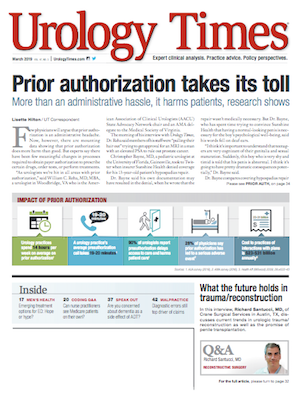Publication
Article
Urology Times Journal
How the 2017 tax law will affect your filing this year
Author(s):
As you prepare your 2018 taxes, here some big changes from the Tax Cuts & Jobs Act you should pay attention to.
With this being the first year the new tax law will impact how people file, what are some big changes I should pay attention to as I prepare my 2018 taxes?
At the end of 2017, the Tax Cuts & Jobs Act was passed by Congress and signed into law by President Trump. This tax season will be the first time many of the changes officially take effect. This article will provide an overview of some of the bigger changes that occurred.
The bill preserves seven tax brackets, but changes the rates that apply to 10%, 12%, 22%, 24%, 32%, 35%, and 37%. Here’s how much 2018 income applies to the new rates:
- 10% (income up to $9,525 for individuals; up to $19,050 for married couples filing jointly)
- 12% (over $9,525 to $38,700; over $19,050 to $77,400 for couples)
- 22% (over $38,700 to $82,500; over $77,400 to $165,000 for couples)
- 24% (over $82,500 to $157,500; over $165,000 to $315,000 for couples)
- 32% (over $157,500 to $200,000; over $315,000 to $400,000 for couples)
- 35% (over $200,000 to $500,000; over $400,000 to $600,000 for couples)
- 37% (over $500,000; over $600,000 for couples).
The new bill nearly doubles the standard deduction. For single filers, the bill increases the deduction to $12,000 from $6,350; for married couples filing jointly it increases to $24,000 from $12,700. However, it eliminates personal exemptions. Previously, you were allowed to claim a $4,050 personal exemption for yourself, your spouse, and each of your dependents.
Also by Jeff Witz, CFP: How to make sense of the IRA aggregation rule
The bill preserves the state and local tax deduction for anyone who itemizes, but caps the amount that may be deducted at $10,000. Before, the deduction was unlimited for your state and local property taxes plus income or sales taxes.
The new tax law doubles the child tax credit. The new credit is $2,000 for children under age 17. The credit is also made available to higher earners by raising the income threshold under which filers may claim the full credit to $200,000 for single parents and $400,000 for married couples. These income thresholds stood at $75,000 and $110,000 respectively in previous years.
The new bill lowers the cap on mortgage interest deductions. If you take out a new mortgage on a first or second home, you will only be allowed to deduct the interest on debt up to $750,000, down from $1 million. Homeowners who already have a mortgage would be unaffected by the change.
The new tax law curbs who’s hit by the alternative minimum tax (AMT). The final bill keeps AMT, but reduces the number of filers subject to it by raising the income exemption levels to $70,300 for single filers, up from $54,300 previously; and $109,400 for married couples, up from $84,500.
Next:"One of the most significant changes is that the new law exempts almost everybody from the estate tax"One of the most significant changes is that the new law exempts almost everybody from the estate tax. While the bill does not call for a repeal of the estate tax, it essentially eliminates it by doubling the amount of money exempt from the estate tax to $10.98 million for individuals and $21.96 million for married couples.
The law does not change a taxpayer’s ability to deduct charitable contributions (assuming they itemize deductions). However, the increased standard deduction will reduce the number of taxpayers who itemize deductions and could impact future contributions.
Read - Flexible spending vs. health savings accounts: How to choose
Most Tier II deductions have been eliminated. These include fees paid to certified public accoutants, financial advisers, and attorneys; an employee’s business expenses (tools, uniforms, supplies, travel, occupational licenses, etc.); investment expenses; home office deduction (some exceptions apply); and some education expenses.
529 accounts can now be used for K-12 education. Previously, these accounts could only be used for higher education. Up to $10,000 per year can be used on qualified K-12 education expenses.
To understand how these changes-as well as others not listed above-may impact you, contact your CPA.
Under the new tax law, were any significant changes made to charitable gifting deductions?
There were no changes to the charitable gifting rules. Individuals can donate up to 30% of their adjusted gross income (AGI) if they are giving non-cash gifts to charity. These can include investments, property, insurance, etc. Any amounts donated above 30% of your AGI can be rolled over to future years and used as deductions when needed.
Additionally, you can still claim a full deduction on cash gifts up to 60% of your AGI. Any amounts donated above 60% of your AGI can also be rolled over to future years.
Mr. Witz is educational program director at MEDIQUS Asset Advisors, Inc. in Chicago. He welcome readers’ questions and can be reached at 800-883-8555 or witz@mediqus.com.
The information in this column is designed to be authoritative. The publisher is not engaged in rendering legal, investment, or tax advice.
Newsletter
Stay current with the latest urology news and practice-changing insights — sign up now for the essential updates every urologist needs.


















